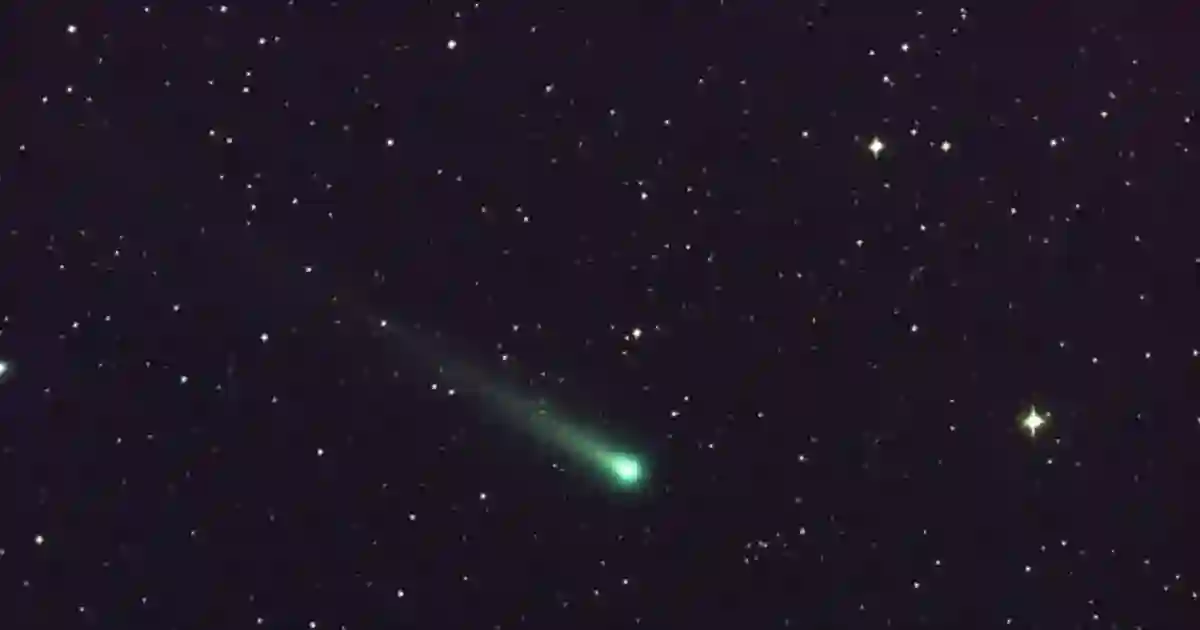
A bright green comet is passing through our solar system, and Astro photographers are overjoyed at the prospect of capturing a once-in-a-lifetime image.
Its name is Comet 2022 E3 (ZTF), and the last time it passed close enough to Earth for humans and Neanderthals to see it was around 50,000 years ago.
Bright Green Comet
It passed the closest point to the sun on January 12th, and in the two weeks leading up to February 1st, its closest approach to Earth, it can be seen with binoculars or even the naked eye.
“It will be passing through the constellation Corona Borealis just before sunrise here in Toronto,” says York University Assistant Professor Elaina Hyde, director of the Allan I. Carswell Observatory in the Faculty of Science. “The Allan I. Carswell Observatory intends to use our one-meter telescope to observe this intriguing object.”
The last time this comet (named C/2022 E3 by astronomers in southern California last year) swooped by Earth was about 50,000 years ago. It might never come back.
It will be 42 million kilometers away from Earth on February 1 at 1:11 p.m. No one knows how bright it will be at that time.
“Right now, you definitely need good binoculars or a small telescope to see this comet, but towards the end of the month it might be possible to view it with the naked eye,” says York Assistant Professor Sarah Rugheimer, the Allan I. Carswell Chair for the Public Understanding of Astronomy.”It will also depend on light pollution in your area and whether we have clear or cloudy skies.”
Comet 2022 E3 (ZTF) is a visitor from the outer solar system, where its orbit takes it thousands of years beyond our view. Astronomers aren’t sure if it gathers enough speed to travel into interstellar space or if its elliptical orbit keeps it close to us.
Read more: Senate pushing to totally ban TikTok due to national security concern
How To See The Comet?

Stargazers in the Northern Hemisphere should be able to see the comet through binoculars in the morning sky for the majority of January. According to NASA, the comet will be visible in the Southern Hemisphere in early February.
Depending on how bright it becomes in the coming weeks, the comet could be visible to the naked eye in dark skies by the end of January.
Comets are distinguished from stars by their streaking tails of dust and energized particles, as well as the surrounding glowing green coma.
The coma is a ring that forms around a comet as it approaches the sun, causing its ice to sublimate, or turn directly to gas. When viewed through a telescope, this causes the comet to appear fuzzy.
According to The Planetary Society, the comet’s orbit around the sun takes it through the outer reaches of the solar system, which is why it has taken so long to pass by Earth again.
The comet’s path after passing through the inner solar system is still unknown. However, don’t expect to see C/2022 E3 (ZTF) again in your lifetime.
“Some predictions suggest that the orbit of this comet is so eccentric it’s no longer in an orbit,” Jessica Lee, a Royal Observatory Greenwich astronomer, stated.C/2022 E3 (ZTF) may never be seen again. January and February could also be the only times in recorded history when humans can see C/2022 E3 (ZTF) from Earth.
Read more: Paxlovid, a COVID-19 drug manufactured by Pfizer, is difficult to obtain in China

